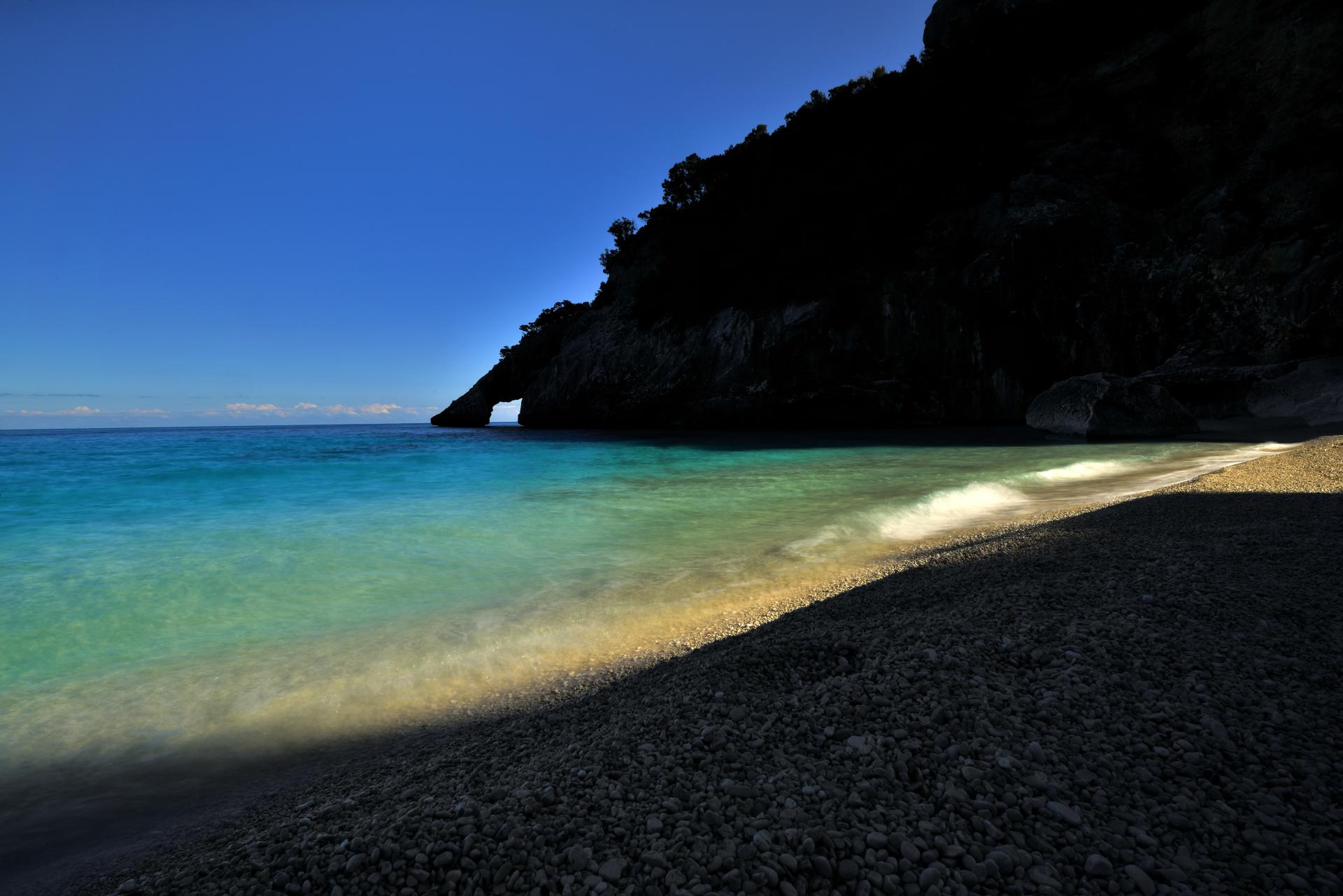The route was created as part of a collaboration between the GAL Ogliastra and the FoReSTAS Agency, with the aim of offering hikers an immersive experience in the natural and scenic beauty of the Ogliastra area. The itinerary features points of interest along every section. You can choose your starting stage and build your own customized route, traveling from north to south or from south to north. The direction of travel may change, but the quality of the landscape remains unchanged.
The territory
This stretch of the trail crosses the Supramonte of Urzulei and Baunei, a landscape of remote plateaus, deep gorges, and sheer cliffs plunging toward the sea. It’s a region where the limestone terrain has carved out grand and dramatic features: sinkholes, canyons, dry riverbeds (codule), and rocky spires alternate with ancient forests and hidden corners, where human presence is subtle and ancient. Here, biodiversity is remarkable, and the environment retains a rare authenticity—between archaeological sites and traditional shepherd huts, deep silences and breathtaking views over the Mediterranean.
The path
These final stages lead from the heart of the eastern Supramonte to the sea, crossing some of the most spectacular and pristine landscapes in Sardinia.
The route begins in the Supramonte of Urzulei, winding through panoramic ridges, sinkholes, and ancient forests, with the chance to visit the famous Gorropu Canyon or, for more experienced hikers, to take a detour to the scenic Punta Cucuttos. From here, descending, you reach the Ghenna Silana pass, which overlooks the coastal Supramonte, shared by the territories of Baunei, Dorgali, and Urzulei. Before continuing, it’s highly recommended to pause and explore some of the area’s natural wonders: Cala Goloritzé, Cala Sisine, and Cala Biriala. The trail resumes through pine and holm oak woods, crossing the Natural Pools of Mamutorco (23) and climbing toward Genna Salbene, in a striking landscape of granite outcrops and wide-open views.
The final stage—one of the most thrilling of the entire route—descends from the Silana pass to the beach of Cala Luna, following the 20 km canyon of Codula Elune (15). Along the way, hikers will encounter the Nuragic village of Or Murales (13), ancient shepherd huts, and dramatic limestone gorges shaped by time. Reaching the sea is a spectacular finale, framed by oleanders, caves, and towering cliffs above the deep blue of the Mediterranean.
From Baunei to Genna Salbene
For those choosing to start the final stretch of the itinerary from Baunei, it is well worth taking the time to explore some of the natural wonders that the coastal Supramonte area, within the Municipality of Baunei, has to offer.
This region is home to some of the most famous and spectacular coves on Sardinia’s eastern coast, including Cala Goloritzé, Cala Biriola, and Cala Sisine—jewels set between limestone cliffs and the deep blue sea. With short detours, you can also reach other sites of great scenic and cultural interest. After this pause dedicated to discovering the area, the journey can resume with a renewed sense of awareness.
The stage begins with a descent through landscapes that had already captivated the eye from the village of Baunei.
After a short stretch, you reach the Nuraghe Loppelie: small but evocative, it offers a stunning view over the Triei valley.
The path then continues along trails and roads surrounded by pinewoods and holm oak forests, eventually arriving once more at the Natural Pools of Mamutorco. For those who have already walked the stage from Su Carcinargiu to Triei, this spot will be familiar, but it remains a pleasant stop—perfect for a refreshing swim if the season allows.
After this moment of peace, immersed in the silence of nature, the ascent to Genna Salbene begins. The trail winds through Mediterranean scrub, holm oak woods, and pine forests, offering a deep immersion in an environment that preserves the authentic charm of the past.
Gradually, the forest gives way to massive granite outcrops, shaped by time into suggestive forms. Panoramic viewpoints become more frequent: the deep green of the woods merges with the warm tones of the rock and the clear blue sky, offering a landscape that delights at every step.
Whether you walk this stretch alone or in company, you are naturally led to connect with the environment. The sounds of the forest—the song of the coal tit, the blue tit, the jay and its surprising imitations—accompany the journey, making the experience even more engaging and profound.

